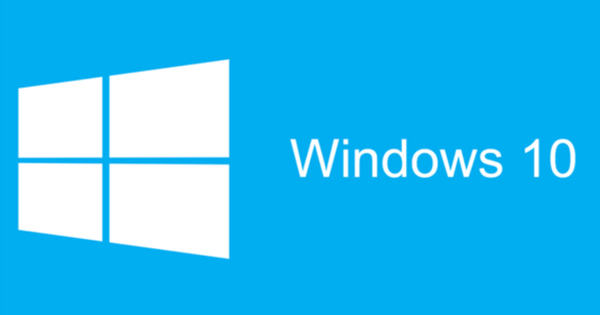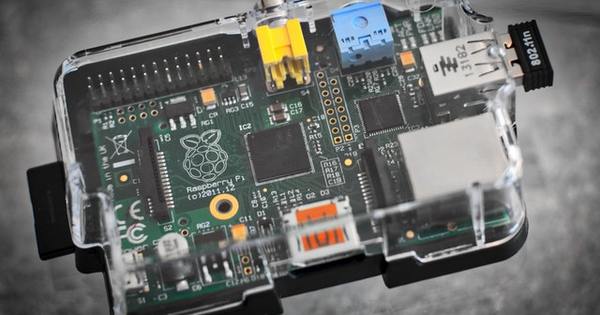Of course we want to have wireless internet throughout our house, but unfortunately we often experience coverage problems with even the most expensive routers. Netgear promises to have a solution with Orbi by connecting a router with a special satellite. Can we finally surf wirelessly throughout the house?
Netgear Orbic
Price: € 429,- (set router and satellite)Memory: 512MB RAM, 4GB flash storage
Router connections: WAN connection (gigabit), 3 x 10/100/1000 network connection, USB 2.0
Satellite connections: 4 x 10/100/1000 network connection, USB 2.0
Wireless: 802.11b/g/n/ac (two antennas per frequency band, maximum 866 Mbit/s) with beamforming and MU-MIMO
Wireless link to satellite: 802.11ac (four antennas, maximum 1733 Mbit/s)
Dimensions: 22.6 x 17 x 6 cm
9 Score 90
- Pros
- Excellent coverage
- Works without cloud
- Multiple floors without cables
- Easy to install
- Negatives
- No guest network
- Interface a bit messy
Speed problems are actually solved with Wi-Fi with the 5GHz band and the better 802.11ac standard. Unfortunately, that's not the case with the coverage issues, which have only gotten worse with 802.11ac. The 5GHz band naturally has a shorter range, making it unrealistic to expect to have Wi-Fi throughout your home with one router. Netgears Orbi is part of a new generation of Wi-Fi products that aims to solve precisely these coverage problems. Netgear calls Orbi a WiFi system and sells Orbi as a set consisting of a router and a satellite. Also read: 6 tips to solve problems with your access point
Inside the package we find a router and a satellite. In terms of design, these are almost identical except for a light blue top. With a height of 22.6 cm and a width of 17 centimeters, they are quite large devices. You can also only put them down, hanging is not included. The router has a WAN port and three gigabit network connections, while the satellite has four gigabit network connections. In addition, both the router and the satellite are equipped with a USB 2.0 port, but that has no function for the time being.

Easy installation
The Orbi designated as a router connects to your existing router or modem (or possibly elsewhere in your wired network). You place the satellite in the middle of your house, for example on the first floor. To start the installation, make a wireless connection and go through a wizard. It also works great on the smartphone. It is striking that you only set one SSID (network name) that is used for both frequency bands. Orbi does not use an underlying cloud service, all software runs locally on the router and the satellite. So you don't have to worry that the plug will be pulled from this WiFi system in the future. The link between the router and the satellite is smooth, with colored lighting indicating whether both components are connected.

AC3000 or AC1200?
If you look at the specifications, Netgear speaks of an AC3000 solution. That 3000 is, as always, the added maximum speed and is divided over three radios. The fastest is an 802.11ac radio with four data streams (antennas) for a theoretical speed of 1722 Mbit/s. The second radio is also an 802.11ac variant with two data streams and a theoretical speed of 866 Mbit/s. The last radio is an 802.11n variant for the 2.4 GHz frequency that uses two data streams and has a maximum speed of 400 Mbit/s. When you know a little about ac standards, those are remarkable numbers. It is perhaps even more remarkable when you learn that for the actual Wi-Fi network only the 5GHz radio with a maximum speed of 866 Mbit/s and the 2.4GHz radio with a speed of 400 Mbit/s are used. So for you as an end user, Orbi is actually an AC1200 solution with two antennas on the 2.4 GHz band and two antennas on the 5 GHz band. How about that?

Fast wireless link
The most impressive 802.11ac radio in the Orbi is not available to you as a user. Netgear uses this radio, which is also present in the satellite in addition to the router, purely for the link between the router and the satellite. When we heard about this from Netgear, we were a little concerned about how the system works. After all, 5GHz radio signals don't have a very long range and in our house an 802.11ac network hardly works across floors. According to Netgear, it should work very well in practice and we can already reveal something: Netgear is right. It is not possible to connect the satellites to your network via a wired connection, the network connections are purely for clients such as a PC or printer.

Basic web interface
You can log in to the web interface as with a normal router and this is similar to what we are used to from Netgear. Although the interface looks quite clear, in our opinion it is just a bit too simple. For example, there is virtually no information about the satellite(s), we do not get any further than an assigned IP address. It turns out that when you enter a satellite's IP address directly into your browser, the satellite has its own web interface. You have to find that out yourself. Here you can, for example, see which devices are connected to that satellite. In short, the web interface does not seem completely finished.
Although both frequency bands are shown separately, it proves impossible to untangle them. Orbi gives you exactly one SSID, because it also lacks a guest network. That is a bit strange for the ultimate WiFi system, by the way. Furthermore, all basic router functions such as the permanent assignment of IP addresses are present. Just don't expect configuration options that go far beyond the essentials, Orbi is not a router for those who like to dive deep into the settings. If you prefer to use another router, you can configure Orbi as an access point system. Orbi supports Dynamic DNS services and includes an OpenVPN server. So you can securely connect to your home network from outside your home.
You can use Netgears Genie app (iOS or Android) in combination with Orbi, but it doesn't work very smoothly. For example, the app shows a shortcut to guest access, but that doesn't work, for example.


Excellent speed and coverage
Our internet speed of 150 Mbit/s is not a big challenge for Orbi, it is neatly achieved on both the ground floor and the first floor. Via our normal speed test, we achieve a speed of 459 Mbit/s on the floor with the router. On the other floor with the satellite we get 358 Mbit/s. To put this into perspective: an AC5300 router on the same floor achieves a speed of at least 550 Mbit/s. On the other hand, there is at most 85 Mbit/s left on the other floor. Orbi achieves no less than 358 Mbit/s on that floor for the same money. In the attic where there is no satellite, we only get 68 Mbit/s and we quickly switch back to the 2.4 GHz band. However, we also tested the system with a second satellite in the attic, you can read more about this later.
With the Orbi, losing testing of the 2.4GHz band is a challenge because there is only one SSID, but this was eventually accomplished by limiting the transmit strength of the 5GHz radio. We achieve 95 Mbit/s via the 2.4 GHz band. That is in line with what you can expect on the 2.4 GHz band when using two antennas these days. Despite the fact that Netgear does not mention support for roaming standards in the specifications, roaming between the access points appears to work fine in practice. Various laptops and smartphones grab the right access point from us and are connected via the 5GHz frequency if possible. So it is not a big deal that both frequency bands are combined into one network. The Orbis consume about 8 watts when idle and 15 watts when there is network activity.
Impressive wireless link to the satellite
To test how good the wireless link between the router and satellite is, we connected a PC to both devices. Of course, the Orbis are still on different floors. In our test, the link speed appears to be around 590 Mbit/s. That is very clever of Netgear, because, as mentioned, this is the speed between two floors. In addition to good antennas, a possible explanation could be that a little more power is used than usual. Normally, 802.11ac uses a transmit power of 200 mW. In certain circumstances, some channels, including the channel being used, allow 104,500 mW.
Second satellite: no mesh network
In addition to the basic set, Netgear gave us a second satellite. This will cost about 249 euros separately, so a considerable investment. We put the satellite in the attic. We did run into a limitation: Orbi is not a mesh system, but a star system. Satellites appear to only make direct contact with the router and not with each other. With the router on the ground floor, we only get 22 Mbit/s in the attic. If we put the router on the first floor and the other satellite on the ground floor, the system works great. In the attic we achieve a decent 384 Mbit/s, while a comparable speed is also achieved on the ground floor. So if you have a difficult house, you can certainly realize a fast 802.11ac network throughout the house with two satellites. You only have to put the router really wired on the first floor.

Conclusion
We are technically very impressed with Netgears Orbi. With this system you can actually realize a super-fast wireless network without having to pull wires across multiple floors. If you have 429 euros to spend, you can now choose between one of the AC5300 routers or the Netgear Orbi. With an AC5300 router (or AC3200 router) you will see in practice that you have an excellent network on one floor, while on another floor there is virtually no ac coverage. With Orbi you provide at least two floors of a good 802.11ac network for the same money and you certainly have WiFi throughout your house. As far as we are concerned, the choice is clear after testing: we go for coverage. It's impressive that you can achieve an excellent 802.11ac network without running a network cable over two floors. A major advantage is that you manage the entire system from one interface. The biggest drawback in the Wi-Fi area is the lack of a guest network, which is something Netgear really needs to add. In addition, for real router fanatics, the configuration options may be somewhat limited. The web interface could also be made a bit more logical. That does not prevent us from already giving Netgear Orbi 4.5 stars. You can probably purchase Netgear Orbi in early November.

